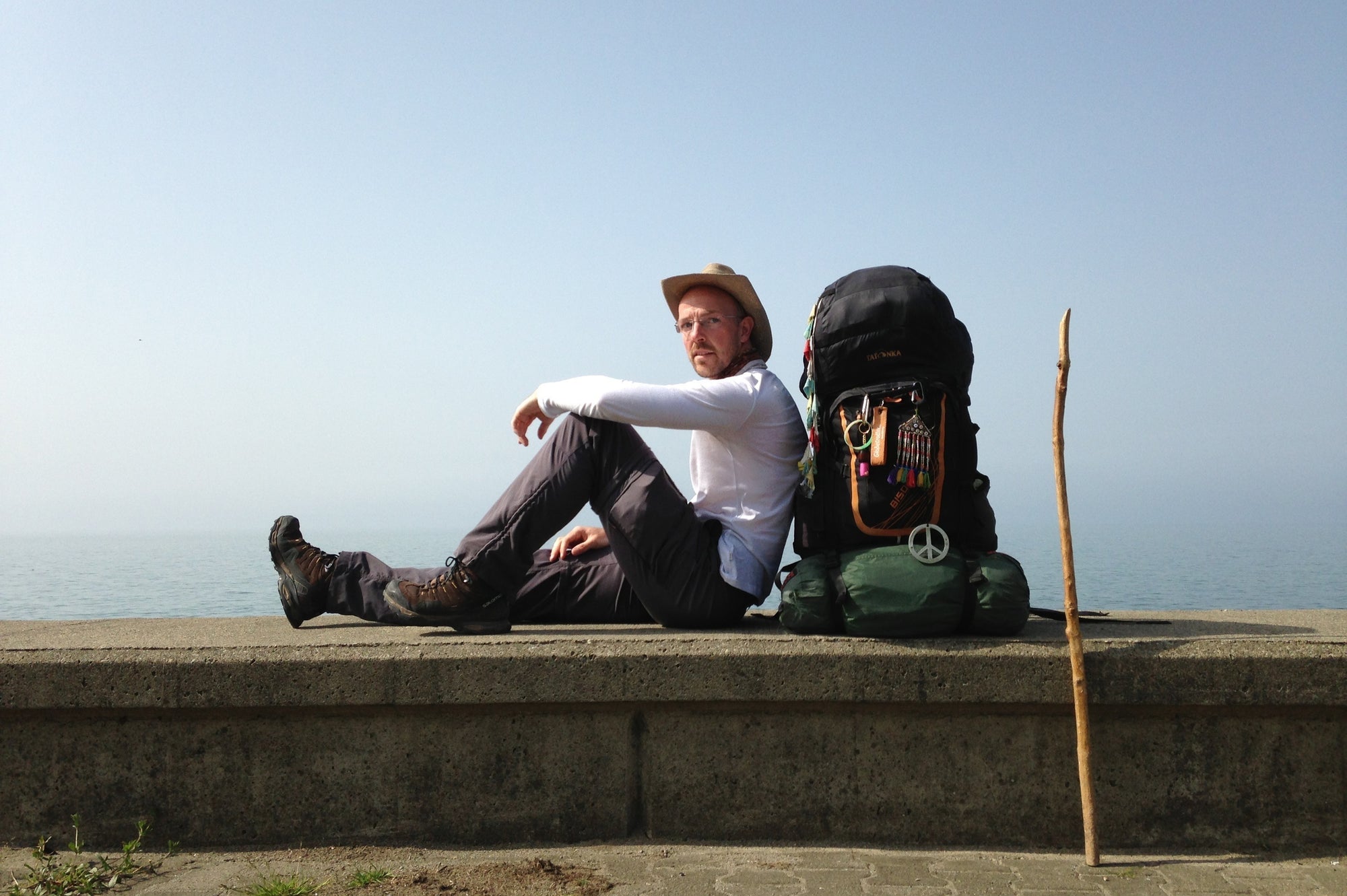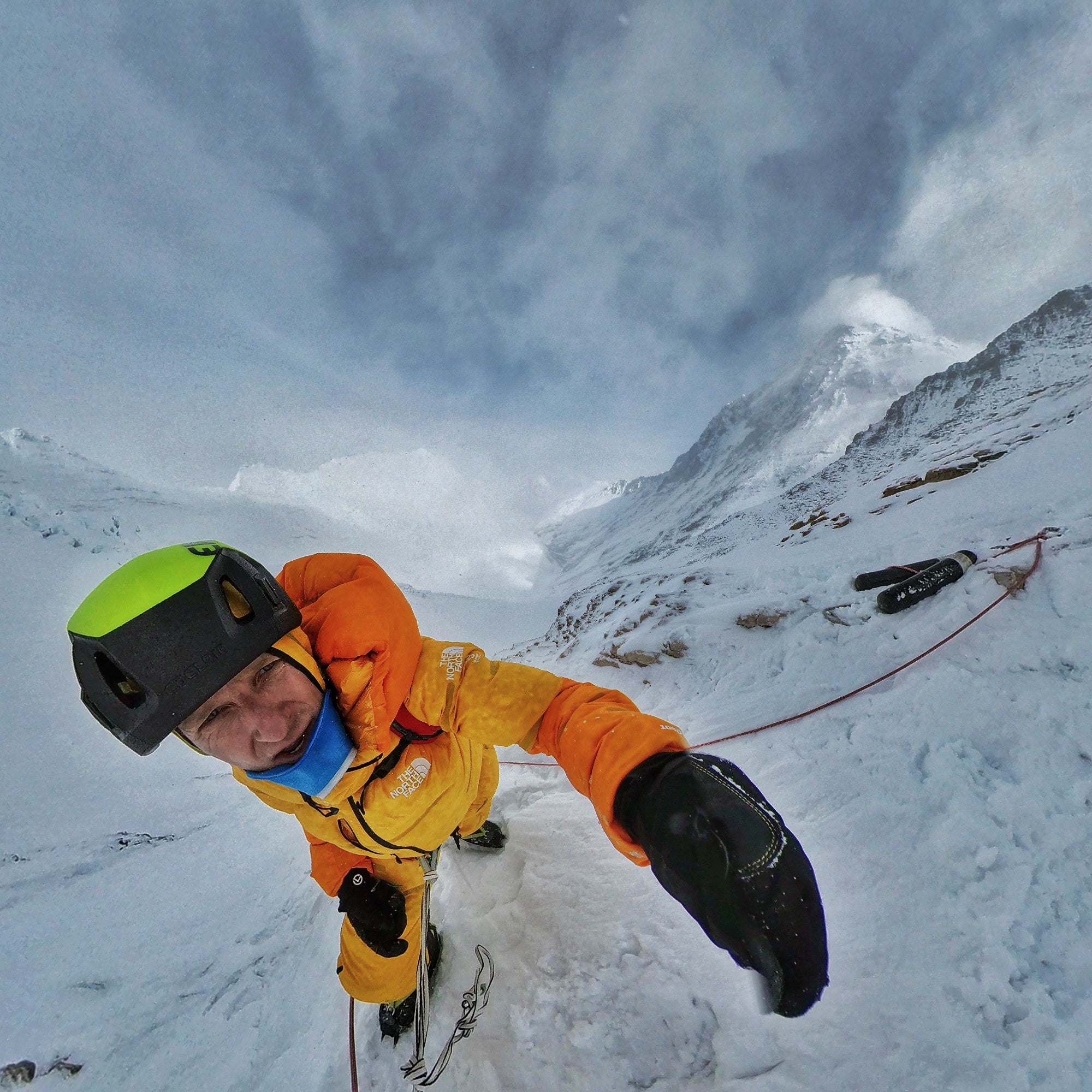Julia: Hi Marlies! We always start off our interviews with a rather simple question: Who are you and what do you do?
I'm Marlies, 34 years old, I was born in Upper Austria - but it's hard to say where I live nowadays since I live in a mobile home with my partner. We're both self-employed, so we can work pretty much anywhere. I am a freelance journalist and my partner Andi is a photographer.
Julia: Has your life always been like this?
No, we used to live in an ordinary apartment. I worked at a newspaper agency for 10 years, but at some point the mountains became more and more important to me. I then became self-employed connected my journalism job with the mountains. At some point we had to move out of our apartment, and we took that as a sign of fate and didn't look for a new apartment - instead we switched from four walls to four wheels. This is a good option for us - we have always been on the road a lot and we don't have to commute.

Julia: How did you start mountaineering? Was it something you already did as a child?
I discovered "the mountains" quite late, when I was about 20 years old. I just didn't know what I wanted to do in my free time. But - this problem was solved quickly, because I started to spend every free minute I had outside.It's never too late to discover something for yourself!
Julia: You also hold a record - maybe that's your greatest adventure as well - you climbed 82 4,000m peaks. How did that happen - was this planned from the start or did it just happen?
It was never planned, at least not for a very long time. Climbing all these mountains became my goal after a very long tour with my partner and my dad. We started to wonder how many 4.000s I had already climbed. I then picked up a “4,000 booklet” and crossed out all the mountains I had already climbed. And the result really suprised me: 62 in 4 years - despite working full-time. I also read about some 4,000s for the first time and that was the moment when it became my goal.
In the beginning, I just wanted to try a 4,000s. And that turned out to be a wonderful experience - after 2 hours we climbed out of a sea of clouds and stood above this sea of clouds. I still have the picture in front of my eyes today - only the highest mountain peaks really were visible and they somehow "shone" orange, and the Matterhorn was also right in front of us. In this moment I asked myself what was really important in life. I was also able to see and feel how beautiful nature is and how much strength it can give us.
I noticed that with every step further away from home and away from everyday life, I seemed to find myself more and more. I wanted to have this feeling again and again.

Julia: And now that's your job, isn't it? You're living the dream of being able to do this full-time.
I'm certainly living a dream. But not as a mountaineering professional. I probably spend more time in front of my laptop than in the mountains. You might imagine my life a bit more "romantic". I do work as a freelance journalist and I'm lucky that I can combine it with the mountains.
Julia: Have you ever thought about earning your money as a mountaineer or mountain guide?
No, not really. Writing has always been my passion and my job, and I think it's great that I can combine that with my love for the mountains. Training to become a mountain guide would definitely be amazing, because of what I could learn and it seems like a fun time. But it was never really an option for me and I don't even know if I would be able to pass the entrance exam (laughs) - the skiing requirements are really demanding and I only started skiing when I was 20 years old. But - it's never too late to learn something.

Julia: When climbing all those 4.000m peaks - were there also tours that didn't go well or didn't work out right away? If so, how did you deal with it?
Surprisingly, there really wasn't much of that. There were only two tours that required several attempts - I'm surprised myself. (laughs) So many unforeseen things can happen in the 4,000s. But that was always clear on the tours that didn't go according to plan. It's not always easy to make the right decision. But turning around is never the wrong decision and I never found it difficult. However, it is important to be very sure about what you are doing and to prepare accordingly - then a lot can work out.
Julia: I was already allowed to interview David Göttler for our adventure interview series. He had to end some tours early at 8,000m quite a few times, once even 20 meters before the summit. He said it hurt, but it's just part of it. He thinks that he was only able to climb some summits because he had failed at others. What your thoughts on this? (Read the interview with David Göttler here)
I can only agree with that. The more you prepare and invest in it beforehand - of course that's a lot with the 8,000s - the more difficult it becomes to turn over.
In 2018 I tried an 8,000s with Andi. It was so difficult because we never had a chance to "attempt a summit". We acclimatized and were up to 7,400 m. By the way, David Göttler was also there at the time and we met him there. We had been waiting for a weather window for weeks because you can only go out when the weather conditions are good. But it didn't happen. The waiting itself was almost harder than the mountaineering itself, because it's something that you cannot influence. With projects as big as 8,000m, but also at work - there are often things that you don't have control over yourself. I often find it even more difficult to accept this than to make a decision myself. I don't think you should focus too much on one goal. The most important thing is that you get home safely, with experiences and memories. The summit is more like the icing on the cake. There's just so much more to life.

Julia: Is mountaineering more of a physical or mental challenge for you? Before tours, which thoughts encourage you to go for it and how do you deal with self-doubt?
The most important thing is that you really want to do it. If you enjoy doing something, you will do it well and with a certain ease. Even if it gets difficult, you can get a lot out of yourself just because you made the decision yourself. You just have to stay focused and focus on the next steps. I also think it's important to have partners at your side with whom you want to achieve this. Together, even more is possible.
Regarding self-doubt - you're allowed to have it, that's absolutely human. But if you listen to your inner voice, then you already know which path you're on and whether it's a good thing. Of course you can get lost and make mistakes, that's part of life. Sometimes it is important that you rearrange and realign yourself and then move on. This is also a great parallel to life - you are always faced with great challenges and life is constant change. It's important to me that I've internalized that. Life is a process, it goes on and sometimes you come to crossroads. And the nice thing is that you can decide freely in which direction to go.
Julia: A lot is possible with the right partner by your side - which qualities are important to you when it comes to an adventure buddy or a partner?
The qualities I look for have most definitely changed over the years. I used to hang out with people I just met online. I wouldn't do that anymore, especially when it comes to difficult tours. But I don't want to miss that time either. The responsibility really lies with yourself in the situation, because you cannot easily pass the responsibility on to someone else.
Nowadays I do most of the tours with my partner Andi, since we usually take our bus together. It's so nice, because you get to know each other really well and understand each other without talking. You can already feel what's going on with the other person just by the movement of the rope, so you don't have to yell out loud. I really appreciate that now. But it's also nice to share experiences with different people. However, you should still look for someone with whom you get on well. Communication is essential here, as well as having the same expectations, the same perception of risk and the same pace. The smallest tours can become the most amazing experiences when shared with the right people. I really only do tours with people who like to spend time with me. In the end, that's the most important thing - having a good time.

Julia: Last question - your 3 tips for the perfect adventure?
#1 Expect the unexpected.
Adventures only happen when something happens that you couldn't have planned. It's also important not to have too high expectations. I know that's never easy, especially when you have big dreams. But without too many expectations, you tend to appreciate the little things more. And it's these little moments that ultimately make life amazing.
#2 The freedom of the individual ends where the freedom of others begins.
#3 Choosing a partner is essential for every adventure.
If you have a partner with you, an experience can become even more intense - and you have someone with whom you can still talk about it 10 years from now. That welds you together.
Julia: Thank you so much!
.



